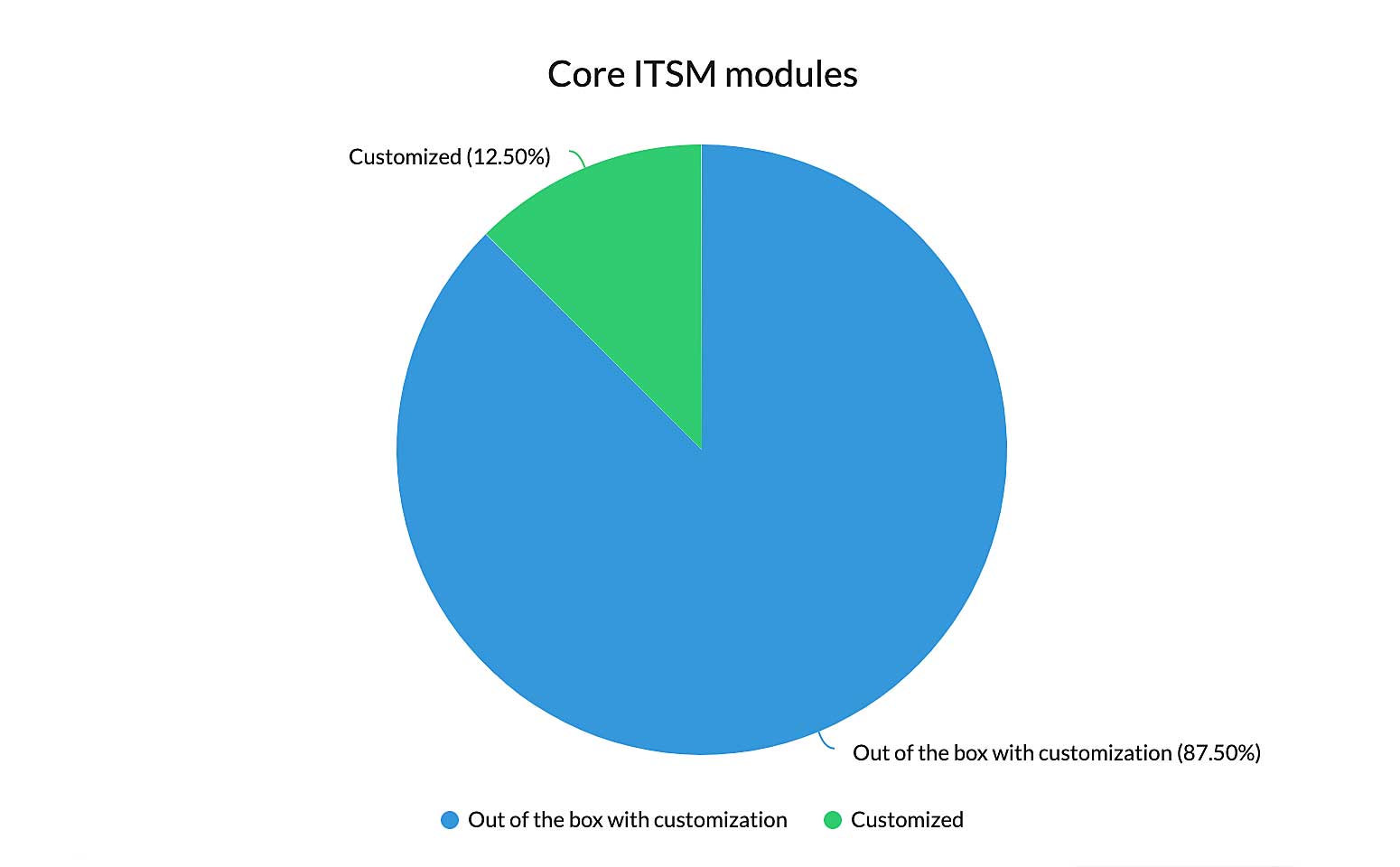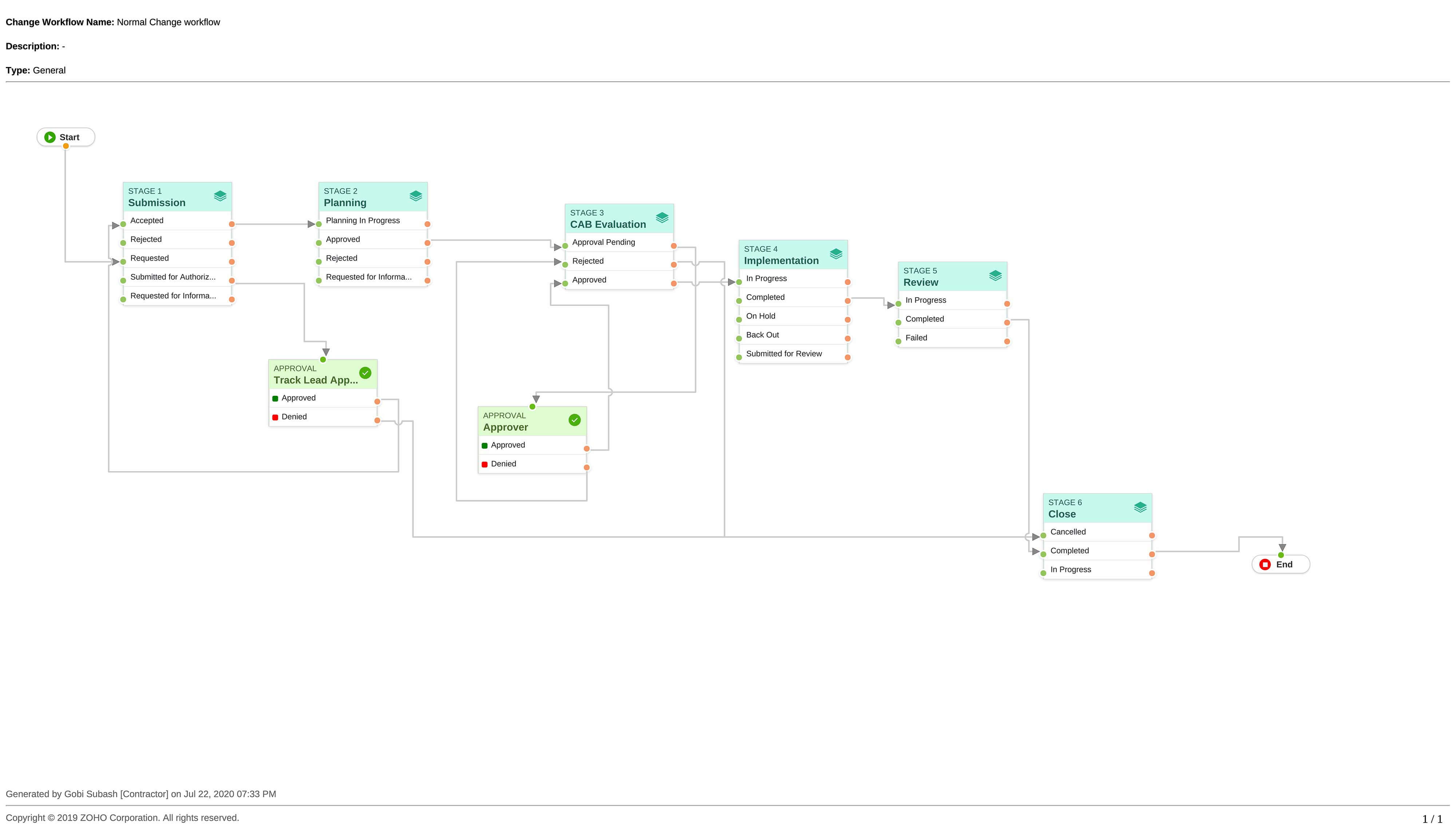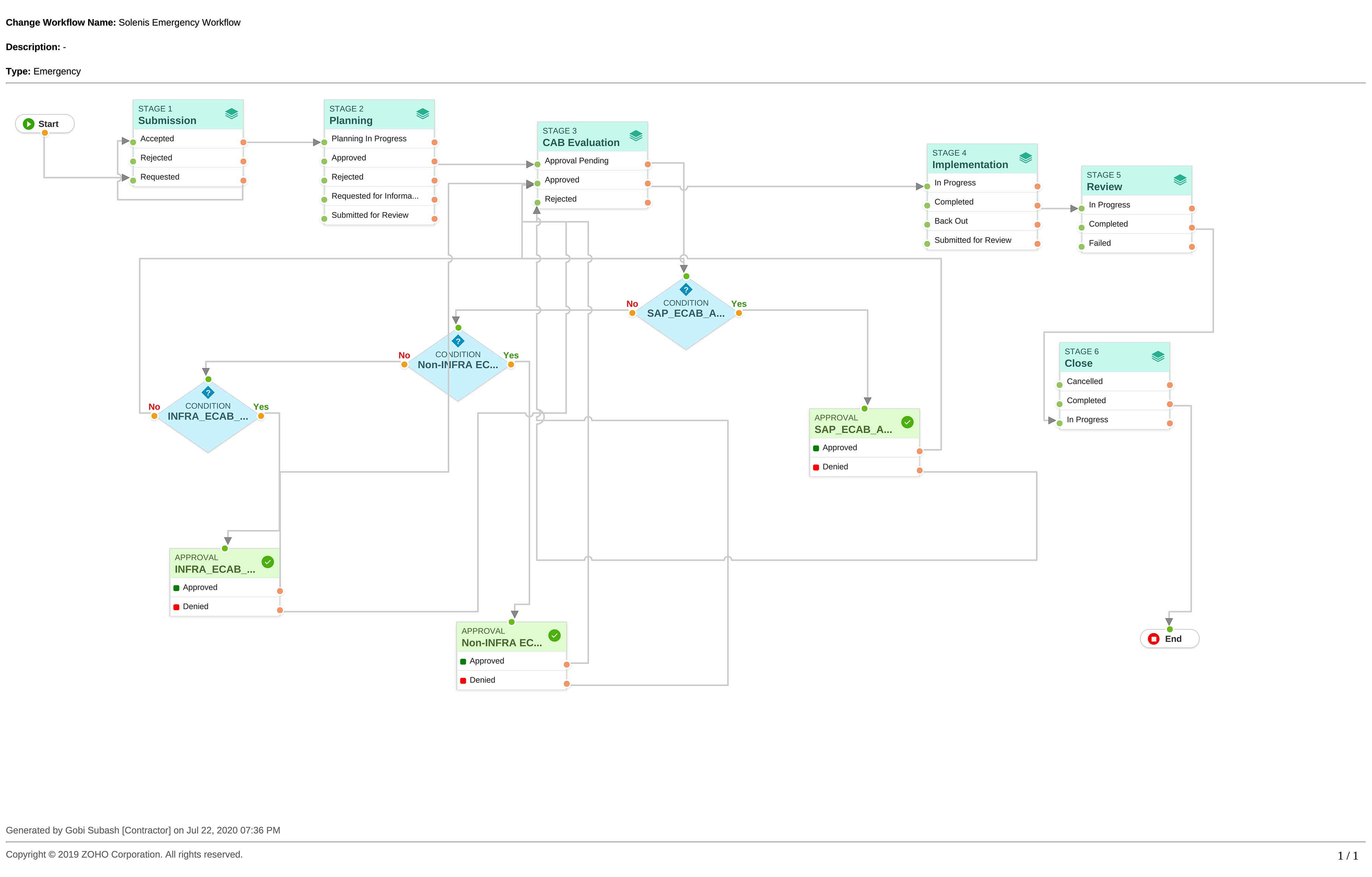As a leading specialty chemicals manufacturer that develops chemical additives and state-of-the-art process control systems, this organization serves a broad array of industries such as pulp and paper, water treatment, oil and gas, power generation, and mining. With a global footprint across 120 countries, this specialty chemicals producer manages multiple facilities for manufacturing, research and development, and customer applications.
The IT department is at the forefront of delivering IT support to its large and complex IT estate spread across five continents. After using ServiceNow for more than five years for its internal IT support, HR, and accounts payable departments, the organization decided to migrate to a more agile ITSM solution to reduce its total cost of ownership (TCO), and maintenance overhead.
With a renewal fee of about $500,000, utilizing ServiceNow was an expensive proposition. An additional factor was the complex actions required to ensure the product was functional, and met the organization's unique business workflows. Even minor customizations required extensive scripting efforts, and IT team often needed to employ the services of third-party specialists and partners, which further increased ITSM overhead costs.
The chemicals manufacturer decided to evaluate other affordable and flexible ITSM solutions that would function efficiently with their existing IT applications, including HP OMi, SCCM, and SAP software.
The organization required a tool that is easy to configure, and integrates with existing processes and applications.
The IT department outlined several core ITSM practices it required, such as incident, problem, change, knowledge, and service catalog management. In addition, the IT team listed several key capabilities it determined were crucial, such as automations, workflows, service-level agreement escalations, performance analytics, and integrations with third-party applications.
The IT department evaluated, through rigorous testing, ManageEngine ServiceDesk Plus, and other cloud-based ITSM solutions. ServiceDesk Plus Cloud's enterprise edition emerged as the right fit for the organization with its core ITSM modules functional out-of-the-box and other modules requiring little customization. Further, the IT team determined the ServiceDesk Plus solution was five times less expensive than the software used previously.

With its intuitive UI, visual workflow builders, and numerous other benefits, the specialty chemicals manufacturer selected ServiceDesk Plus as its tool of choice for the IT department.
Besides conventional incident creation mechanisms through emails and templates in the self-service portal, ServiceDesk Plus enables the IT team to stay on top of IT monitoring alerts by way of automated creation of incident tickets.
The organization's IT team uses HP OMi to monitor its vast IT estate comprised of 6,000 IT assets distributed across its global offices in five continents. Using ServiceDesk Plus' integration capabilities, the IT team is now able to integrate contextually, and create incident tickets based on the monitoring alerts triggered in HP OMi. The result is a proactive incident management approach instead of a reactive response to service incidents.
To standardize its incident resolution process, the IT team also outlined troubleshooting processes technicians could perform by the click of a button within the ticket. This was made possible by the Request Life Cycle (RLC) feature in ServiceDesk Plus that enables the creation of custom buttons to automate several actions, like triggering tasks, sending notifications, escalating tickets, or running custom functions.
The chemicals manufacturer is able to tailor the ticketing module to its unique business requirements without difficulty using ServiceDesk Plus' out-of-the-box functionality that prioritizes, and assigns incident tickets to the right IT support groups.
The IT team also plans to migrate its other IT processes, such as applications monitoring, to ManageEngine's IT management suite. These capabilities, along with native integrations with ServiceDesk Plus, will help the IT team monitor and log tickets automatically based on predefined criterion, all from within the ServiceDesk Plus console.
The organization hires under the two categories, employees and partners, so the IT team required onboarding and offboarding forms in the service catalog customized for its unique staffing policies. Since the requirements and access levels for these two designations vary, the chemicals producer required forms that performed dynamic actions based on end-user input.
For example, the hardware accessories available for new hires differ across various regions. These hardware details need to be auto-populated in the request form based on the selected region. When the form is completed and submitted, different tasks should be triggered automatically, and assigned to the right IT support groups for delivering the requested services.
The field and form rules in ServiceDesk Plus enable the IT team to create forms so that different fields and tasks are displayed and triggered depending on the type of hire selected. This functionality is also provided for mandating, auto-populating, and hiding specific fields in the form, such as hardware, software, and SAP access.
From the selection of IT assets, to the provision of access to multiple services, employee onboarding is standardized with the right services offered to the right audience.
With a workforce of more than 5,000 employees and a complex IT estate spread across 120 countries, the IT department needs to seamlessly implement changes and updates. ServiceDesk Plus helped the organization construct a unique change management framework to implement standard and emergency changes.
The chemicals manufacturer has specific requirements concerning the change management workflows in ServiceDesk Plus based on those it follows internally.
It included setting up a dedicated change management team comprising of a track owner, track manager, change approver, and change manager for different categories of changes. With the visual change workflow builder in ServiceDesk Plus, the IT department creates unique workflows to orchestrate different change management functions, such as sending approvals, triggering tasks, and keeping the stakeholders in the loop, through automated notifications at every stage of the change life cycle.


One of the critical requirements for the IT department is comprehensive reporting functionality in its ITSM tool. The chemicals producer relies on several key performance indicators (KPIs) to optimize its ITSM strategy, especially in the areas of incident and change management.
For example, in addition to measuring standard KPIs, such as the number of open incidents, overdue incidents, and first-call resolution rate, the IT team requires real-time graphical dashboards to monitor:

With ServiceDesk Plus, the IT team can create customized reports, and schedule them to be sent to specific stakeholders regularly. The IT team creates graphical dashboards to track KPIs and performance trends for various ITSM modules in real time. By integrating with Zoho Analytics, Zoho's business intelligence and data analysis tool, the IT team also creates customized dashboard widgets for advanced reporting that grants them a bird's-eye view across their IT operations.
Apart from the ITSM, HR, and AP portals, the chemicals manufacturer decided to implement unique service portals to handle Customer Master Data, and Remote Application Monitoring. These portals manage customer data and deliver IT support for the organization's more than 1,500 end users located outside the United States.
Through native capabilities in ServiceDesk Plus, the IT team created five custom portals accessible through a single ESM platform that enhanced service delivery for the organization across its business functions.
With ServiceDesk Plus, the chemicals manufacturer replicated the same ITSM implementations that they were using in ServiceNow at much lower financial and maintenance overhead cost.
ServiceDesk Plus delivers the core industry-standard ITSM modules out-of-the-box while providing IT departments with a flexible tool to develop low-code apps, create custom functions, and trigger webhooks. Advanced ESM capabilities in ServiceDesk Plus provide a unified service management approach for the organization's diverse business operations.
ServiceDesk Plus continues to address the chemicals business's service management challenges and assist with incremental improvements in its service management platform.